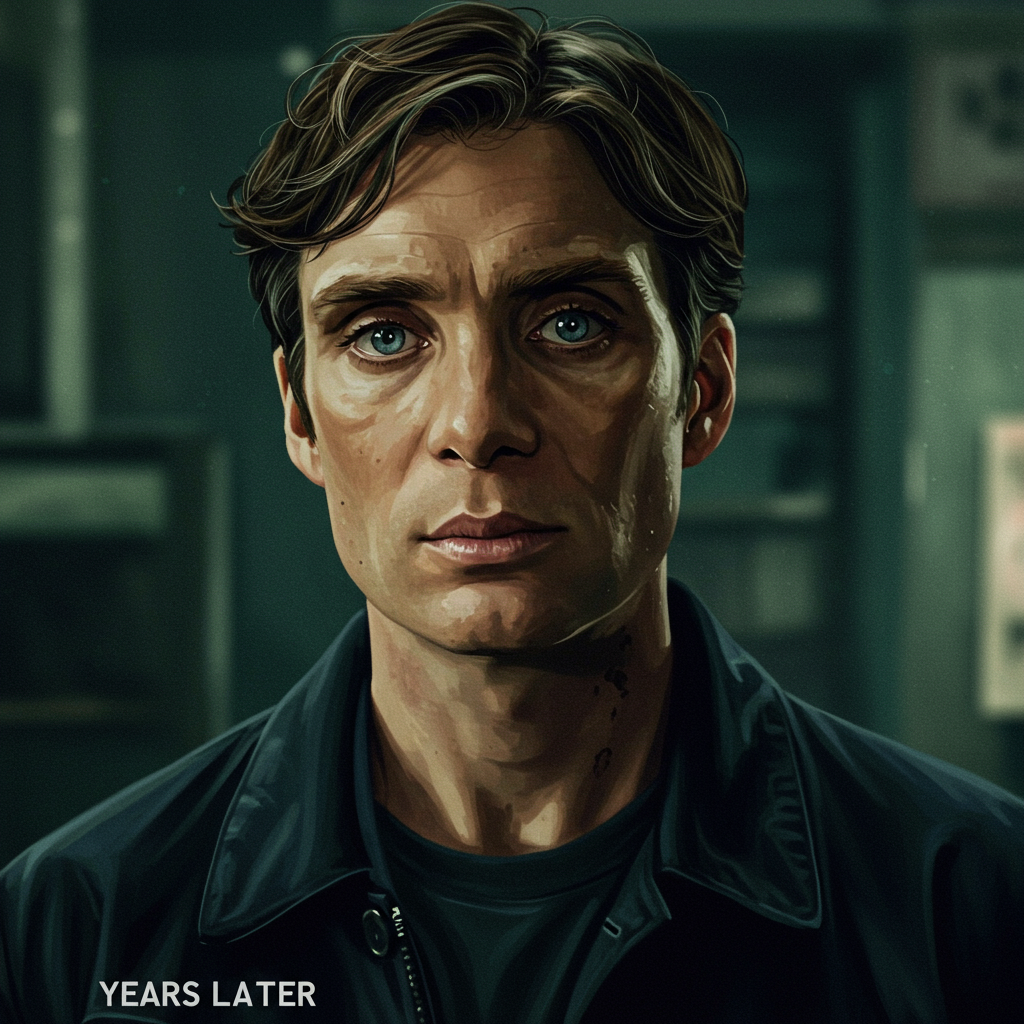28 Years Later, the highly anticipated return to the world of the Rage virus, has finally hit theaters, bringing with it a chilling new story and an ending that has left audiences buzzing. If you’re among those wondering about the cryptic final moments and what they signify for the future of this iconic horror franchise, you’re in the right place.
First things first: Are there any extra scenes after the credits roll? No, 28 Years Later does not feature a post-credits scene. However, the ending sequence itself is a significant development, packed with reveals and tonal shifts that directly pave the way for the planned sequels.
Full spoilers for 28 Years Later follow!
Directed by Danny Boyle and written by Alex Garland – the creative duo behind the original 2002 film 28 Days Later – 28 Years Later is a direct sequel that intentionally bypasses the events of 28 Weeks Later. Receiving stellar early reviews, including a 9/10 from IGN, the film marks the beginning of a new trilogy. The second installment, titled 28 Years Later: The Bone Temple, has already been shot back-to-back with this film, helmed by Nia DaCosta (Candyman, The Marvels), and is slated for release on January 16, 2026. A third film is also planned, though its production is contingent on the box office success of the first two.
Given this ambitious plan, it’s clear the ending of 28 Years Later is designed to leave a lasting impression and set the stage for future horrors. Let’s break down what it all means.
A Changed World, But Contained
Set 28 years after the initial outbreak, the film quickly establishes that the Rage virus, while devastating, was ultimately contained within the United Kingdom. While this might seem like a departure from 28 Weeks Later, which depicted the infection spreading to Paris, director Danny Boyle has clarified this isn’t a retcon ignoring the second film. Instead, he explained that “somehow the French had managed to drive the virus back across the channel to its origin in the British mainland.”
This containment serves a dual purpose. Firstly, it allows Boyle and Garland to return to the more intimate, character-focused narrative style of 28 Days Later, concentrating on a small group rather than a global apocalypse. The 28 Days Later films, at their core, are fundamentally “family dramas,” exploring how individuals and makeshift families navigate impossible circumstances. This smaller scale grounds the horror, making the apocalyptic setting a catalyst for personal journeys rather than the main event.
Secondly, containing the virus to the UK allows the film to explore themes relevant to the decades since the original’s release, particularly isolationism and disassociation in the face of major real-world traumas like Brexit, the COVID-19 pandemic, and global conflicts. Boyle confirmed Brexit was a specific inspiration, viewing the film as a reflection of societal responses to feeling cut off from the wider world. The film depicts this through characters like Erik, a Swedish navy trooper representing the technologically connected outside world, contrasting sharply with young protagonist Spike, who knows nothing of modern life or the world beyond quarantined Britain. The indifference of the international community highlights how easily horrific tragedies are compartmentalized today.
This focus on a specific, adapting world, rather than just outright collapse, also taps into a broader human fascination with apocalyptic scenarios. These stories, much like the medieval Danse Macabre or the horror of the nuclear age, allow us to confront anxieties about death, unpredictability, and powerlessness in the face of overwhelming forces – whether it’s a plague, nuclear annihilation, or seemingly insurmountable global problems.
The Bizarre Ending Explained
28 Years Later centers on young Spike (Alfie Williams) and his journey with his father, Jamie (Aaron Taylor-Johnson). The film follows Spike’s harrowing experiences on the mainland, including the heartbreaking loss of his mother, Isla (Jodie Comer), who succumbs to cancer and is consensually euthanized by doctor Ian Kelson (Ralph Fiennes). A particularly shocking sequence involves the discovery of a pregnant Infected woman and the delivery of her seemingly uninfected baby – a grim testament to the virus’s terrifying evolution, hinting that reproduction is possible and that some Infected, known as “Alphas,” possess enhanced strength and intelligence, even forming pack structures for hunting.
After witnessing Kelson defend the baby from the Alpha Infected father, Spike is sent away with the infant. He eventually leaves the baby with a kind family but, feeling betrayed by his father, chooses not to return home, opting to explore the mainland alone. The final scenes show Spike becoming more independent, hunting and surviving.
However, the film takes a sudden, jarring turn when Spike is pursued by a group of Infected and dramatically rescued by a mysterious gang who use parkour, stylized combat, and unlikely weapons like golf clubs to dispatch the infected. This group, wearing tracksuits and looking unlike anyone else in the film, is led by an older man named Jimmy Crystal, played by Jack O’Connell.
Boyle confirmed that this sequence is a deliberate “epilogue or an end theme” serving as a direct “handover to the second film.” The stark tonal shift, from the film’s previously somber and atmospheric mood to this almost comical, off-kilter action, suggests The Bone Temple will explore different factions and survival methods within the post-Rage UK, potentially with a more varied tone.
Who Are the Jimmys? The Savile Connection
Perhaps the most talked-about and perplexing element of the ending is the appearance of Jimmy Crystal’s gang, often referred to as “The Jimmys.” For UK audiences, their appearance, particularly the tracksuits, jewellery, and leader’s name, instantly sparks recognition: a clear, albeit bizarre, homage to the disgraced British television personality and prolific sexual predator, Jimmy Savile. The film reinforces this connection by revealing in the credits that O’Connell’s character is named Sir Jimmy Crystal and is “a cult leader with a dark past,” and that his followers are all named variations of “Jimmy.”
This deliberate choice is controversial and puzzling. Director Danny Boyle and writer Alex Garland have confirmed the inspiration. Garland explained Savile was chosen for his deep, if now tainted, connection to British pop culture, representing a “partial remembrance, clinging onto things and then recreating them as an image for followers.” The theory is that because the Rage outbreak occurred in 2002, before Savile’s crimes were widely exposed after his death in 2011, the public memory of him in the film’s timeline remains that of a popular, if eccentric, celebrity. The cult may be attempting to “fix” Britain, perhaps twistedly mimicking Savile’s charity work or TV show premise (“Jim’ll Fix It”).
Crucially, Boyle revealed that Jimmy Crystal is the grown-up version of the terrified little boy named Jimmy seen hiding from the Infected during the film’s opening prologue sequence. This revelation ties the beginning and end of 28 Years Later together through his character’s dark, unseen journey over the intervening decades. Boyle also stated that Jimmy Crystal’s role, and that of his cult, is to “reintroduce evil into what has become a compassionate environment,” suggesting that in a world where the infected are the primary threat, human evil will emerge as a new, central challenge.
The Road Ahead: Sequels and Returning Faces
The ending of 28 Years Later firmly establishes the path for the new trilogy. The second film, The Bone Temple, will heavily feature Jimmy Crystal and delve deeper into the “nature of evil,” contrasting with 28 Years Later‘s focus on “family.”
But perhaps the most exciting confirmation for long-time fans is the return of the original film’s protagonist, Jim, played by Cillian Murphy. While an executive producer on 28 Years Later, Murphy does not appear in this first film by design, allowing new characters like Spike to take center stage. However, Boyle has explicitly confirmed that Cillian Murphy will reprise his role as Jim in 28 Years Later: The Bone Temple. He will reportedly have a brief appearance at the end of the second film before potentially taking a major role in the third installment. “Everybody’s standing by for that,” Boyle stated, “Including Cillian. … He is in the second one.”
Spike’s character is also confirmed to run through the entire trilogy, suggesting his journey will continue to be central. While the infected have evolved (including the introduction of Alphas), and there’s hope for other original characters like Selena (Naomie Harris) to return, the confirmed appearance of Cillian Murphy as Jim is the most anticipated development, promising a convergence of the old and new generations of the 28 Days Later saga.
The ending of 28 Years Later, while divisive in its tonal shift and controversial Savile reference, undeniably succeeds in generating intrigue and excitement for the sequels. It leaves Spike in a precarious new world, introduces a strange and potentially dangerous human element in The Jimmys, and most significantly, confirms that the waiting is almost over for Cillian Murphy’s return as the iconic survivor, Jim.



